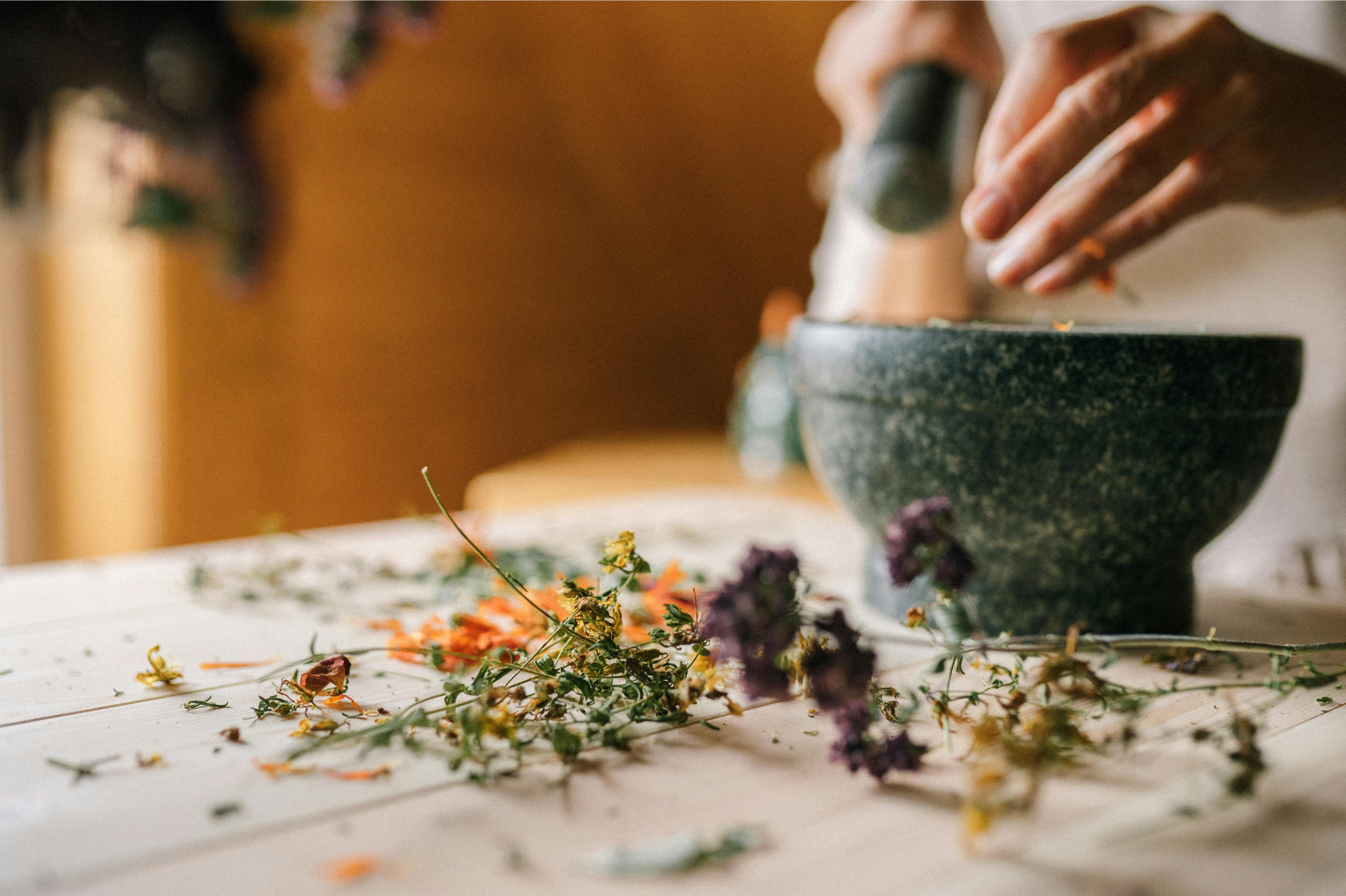
Medicinal herbalists classify herbs into different categories to make prescribing easier. This is largely based on how herbs work within the body in relation to their individual medicinal properties. Herbs can then be selected based on this knowledge and combined to create an effective treatment. Many herbs have multiple actions and are therefore included in several categories. This is a list of the most common properties of herbs. Those highlighted in bold are included in our Petcare Herbal Support Drops range.
Alteratives
This is an old word for herbs that were once known as blood cleansers and are still widely used to slowly restore wellbeing and general vitality. Examples include Burdock, Garlic, Nettles and Cleavers.
Antacids
These herbs help reduce the level of acid production and useful in managing acid reflux and ulcers. The list includes Meadowsweet, Peppermint and Cranesbill.
Anti-catarrhals
As the name suggests, remedies in this category help remove excess mucus and catarrh. As such they are particularly useful in treating rhinitis, sinusitis and coughs. Useful examples include Sage, Thyme, Golden Rod (Solidago) and Garlic.
Anti-diarrhoeals
Herbs such as Peppermint, Agrimony, Cranesbill and Meadowsweet can help resolve diarrhoea through several different actions. Some help soothe the intestine such as Peppermint, whilst herbs such as Agrimony, Bayberry and Cranesbill have an astringent (binding) action.
Anti-histaminics
These herbs help reduce the level of skin irritation and itching due to underlying allergies triggered by histamine release. Chinese Foxglove and Nettles are important examples within this group.
Anti-inflammatories
Remedies in this category help reduce inflammation and pain and have a wide number of applications ranging from helping with arthritis, soothing sore skin and healing the lining of the bowel. Examples include Wild Yam root, Devil's Claw, Boswellia, Turmeric, Chamomile, Meadowsweet and Calendula.
Anti-microbials
Herbs in this group act by fighting off infection, either by helping to destroy invading organisms or by supporting or strengthening the immune system. Examples include Garlic, Echinacea, Peppermint, Rosemary and Thyme.
Anti-spasmodics
Medicinal herbs which relieve spasm are termed anti-spasmodics and are utilised to help relieve cramping pains and the discomfort associated with colic and indigestion. Skullcap and Valerian are good examples.
Astringents
Tannins are the major component of most of the herbs in this category and act to tone or firm up tissue. They can also help by reducing discharges and secretions and will help limit bleeding where this is a problem. Examples include Bayberry, Agrimony, Raspberry, Yarrow, Slippery Elm bark and Bearberry.
Bitters
Bitters have a bitter taste and stimulate the appetite, digestion and flow of digestive juices via a reflex action through the taste buds. Barberry root and Gentian are good examples.
Carminatives
Herbs in this category help prevent colic and the associated abdominal pain. They contain volatile oils which stimulate the digestive system, relax the muscles of the stomach and encourage peristalsis. Aniseed, Peppermint, Dill, Valerian and Garlic are included in this list.
Cholagogues and Choleretics
This category of herbs stimulates the production of bile from the liver (choleretics) or release of bile from the gall bladder (cholagogues). Bile helps stimulate the digestive process and is also a natural laxative. Herbs which have these properties include Gentian, Dandelion, Barberry bark, Fringetree bark, Milk Thistle and Peppermint.
Demulcents
The main action of demulcents is to protect and soothe mucous membranes. This action is especially useful where mucous membranes are sore or inflamed and will, in effect, allow healing to occur. Familiar examples include Marshmallow root, Liquorice, Parsley Piert, Oats, Slippery Elm bark and Couchgrass.
Emollients
Emollients are like demulcents except used externally to soothe and protect skin. Many of the herbs in this category are also used internally as demulcents. Examples of herbs with emollient properties include Comfrey, Liquorice, Mallow, Marshmallow and Slippery Elm.
Expectorants
This group helps loosen and remove excess mucous from the airways. They work in a variety of ways. Some irritate the airways helping to expel mucous, while others loosen up any mucous so that it can be removed with less effort. Some also help destroy viruses and bacteria, as they have an antiseptic action. Examples include Aniseed, Garlic, Coltsfoot, Peppermint, Liquorice and Thyme.
Hepatics
The herbs in this category assist and support the liver and are useful in treating a variety of liver conditions. Most will also help increase either the production or flow of bile. Barberry bark, Milk Thistle, Dandelion root, Cleavers and Cascara are included within this group.
Laxatives
Included within this category are several herbs which can help relieve constipation. Some act to help stimulate and evacuate the bowel, others help to soften the stool. Examples include Dandelion root, Barberry, Cascara, Rhubarb root and Cleavers.
Nervines
The main action of this group is on the nervous system. Some act as stimulants, others strengthen the nervous system generally and some tone it down. Ginseng, Oats, Hops, Valerian, Skullcap and Rosemary are good examples.
Sedatives
Herbs such as Valerian, Skullcap, Chamomile and Hops have actions that can help calm the nervous system and help reduce stress. They are particularly useful in treating nervous animals or those with behavioural problems.
Stimulants
As the name suggests, remedies in this category can help stimulate the body, acting through supporting some of basic physiological functions. Examples include Cayenne, Garlic, Ginseng, Peppermint, Mustard and Rosemary.
Tonics
There are a great many herbs which have properties as tonics. They act across the spectrum of body systems helping to strengthen and maintain specific organs and body functions. Examples include Agrimony, Bearberry (also known as Uva ursi), Cleavers, Garlic, Parsley, Raspberry and Skullcap.
Vulnerary
Vulneraries assist in the healing of minor wounds, sores and cuts and are usually applied externally or whilst some are also used internally. Some of the best-known remedies include Calendula (Marigold), Aloe vera, Arnica, Comfrey, Garlic and Yarrow.
